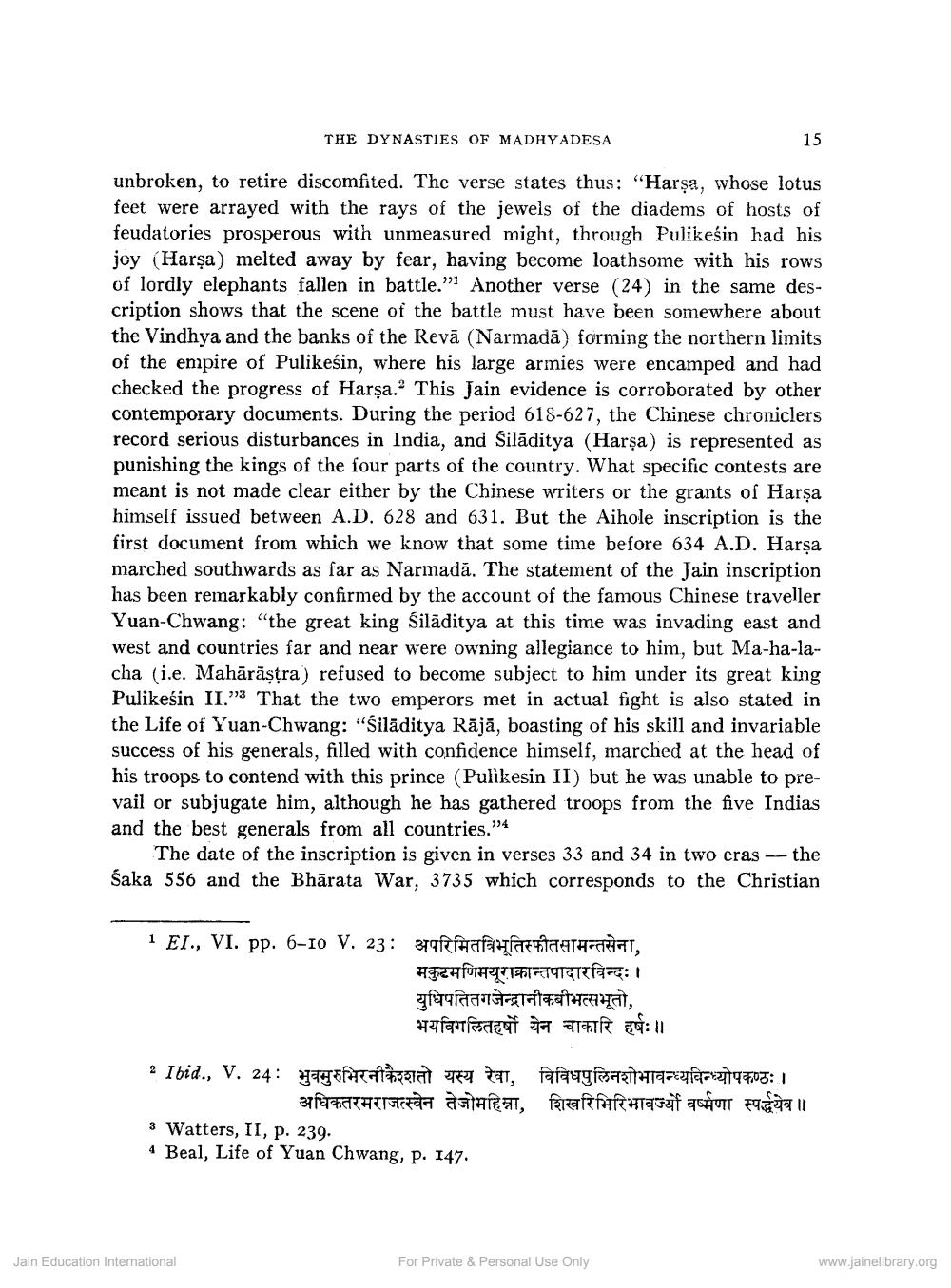________________
THE DYNASTIES OF MADHYADESA
15
unbroken, to retire discomfited. The verse states thus: "Harșa, whose lotus feet were arrayed with the rays of the jewels of the diadems of hosts of feudatories prosperous with unmeasured might, through Pulikesin had his joy (Harşa) melted away by fear, having become loathsome with his rows of lordly elephants fallen in battle." Another verse (24) in the same description shows that the scene of the battle must have been somewhere about the Vindhya and the banks of the Revā (Narmadā) forming the northern limits of the empire of Pulikesin, where his large armies were encamped and had checked the progress of Harsa." This Jain evidence is corroborated by other contemporary documents. During the period 618-627, the Chinese chroniclers record serious disturbances in India, and Silāditya (Harşa) is represented as punishing the kings of the four parts of the country. What specific contests are meant is not made clear either by the Chinese writers or the grants of Harsa himself issued between A.D. 628 and 631. But the Aihole inscription is the first document from which we know that some time before 634 A.D. Harsa marched southwards as far as Narmadă. The statement of the Jain inscription has been remarkably confirmed by the account of the famous Chinese traveller Yuan-Chwang: "the great king silāditya at this time was invading east and west and countries far and near were owning allegiance to him, but Ma-ha-lacha (i.e. Mahārāstra) refused to become subject to him under its great king Pulikesin II.”3 That the two emperors met in actual fight is also stated in the Life of Yuan-Chwang: "Silāditya Rājā, boasting of his skill and invariable success of his generals, filled with confidence himself, marched at the head of his troops to contend with this prince (Pulikesin II) but he was unable to prevail or subjugate him, although he has gathered troops from the five Indias and the best generals from all countries.''4
The date of the inscription is given in verses 33 and 34 in two eras -- the Śaka 556 and the Bhārata War, 3735 which corresponds to the Christian
1 El., VI. pp. 6-10 V. 23: 3TH EHETTE PITCATHRITT,
मकुटमणिमयूराक्रान्तपादारविन्दः। युधिपतितगजेन्द्रानीकबीभत्सभूतो, भयविगलितहर्षो येन चाकारि हर्षः॥
2 Ibid., V. 24: T
a t tat, faraugai: 1972 197,02:1
अधिकतरमराजत्स्वेन तेजोमहिना, शिखरिभिरिभावों वर्मणा स्पर्द्धयेव ॥ 3 Watters, II, p. 239. 4 Beal, Life of Yuan Chwang, P. 147.
Jain Education International
For Private & Personal Use Only
www.jainelibrary.org




